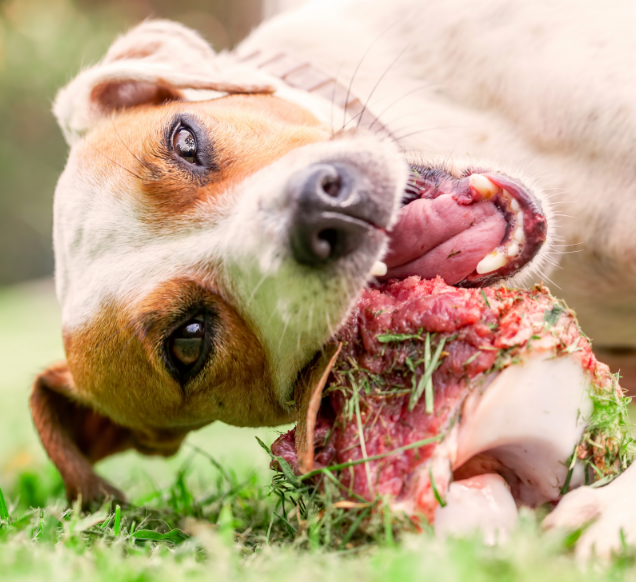Why Choose Raw?
Why RAW?
The very simple answer to this question, is that a raw diet is key to health!
However the reality to getting a raw food diet right requires a little more awareness and understanding.
We have all heard the statement ” we are what we eat” but how many people that truly understand the power of this phrase shows in the fact that people and our domesticated animals are riddled with illness and disease!
“what we eat becomes us!”
At sure4pets we always bring facts to our customers with the aim to help you ensure that your dogs are healthy and maintain health throughout their life based on the science and common sense as seen in nature.
The whole purpose and reason for a raw diet is to ensure and maintain health which brings vitality and longevity.
It is said that there are around 80 million species – billions of animals that live on earth, whilst we’re not sure of the exact numbers, we know 4sure there are a lot! these animals are also generally placed into 4 categories – Herbivore, Carnivore, Frugivore and Omnivore each is separated by its anatomical features, the key with all species is that they consume their SARF- Species Appropriate Raw Food diet.
(please click the following link to confirm your dogs category)
No animal on earth cooks it’s food, neither do they consume a dry biscuit/kibble by product, this is also the same with animals that are kept in Zoo’s, only the veterinary industry and the manufacturers of these so called foods push and promote them as healthy, animals in nature live by the laws of nature.
When we look back to nature and look at these laws, we find some very clear and distinct differences to our societal programming.
1, There is no cooking or blending of foods before consumption
2, There is no set meal, set time or set amount
3, There are no flea, worm or vaccination treatments
A raw diet and in particular the SARF -Species Appropriate Raw Food diet is based on natures laws, feeding as per the species requirements as well as the science that is Bio-Chemistry.
Bio Chemistry tells us that there are around 102 minerals make up the cellular structure of the physical body, for example the bones as most are aware require calcium for strength and health, they also require phosphorus and magnesium too.
The brain requires carbon and copper, the blood iron, the pancreas chromium, the muscles magnesium and so on and so forth.
We live in a mineral kingdom where plants take minerals (inorganic) and turn them into an organic life form meaning that when the herbivore eats the plant, its digestive system breaks down this living organism to extract the minerals so that it can support celf! The carnivore then comes along and consumes the Herbivore using its specific digestive system to extract the minerals again in order to support itself at the cellular level.
This is one of the key elements that is missed and is essential when truly understanding what nutrition is.
With a living organism and some thing that is alive, it has a water base, the body is 80% water! hence a raw diet and again as mentioned a SARF diet is key to health as it provides H30 –
When dried or cooked foods are given (away from the laws of nature) they will be lacking in moisture reducing the amount of water content within the body which with the understanding of the body having a blood vessel as well as a lymphatic vessel allows us to really begin to see the importance of the phrase “we are what we eat”
Why Choose raw, or more importantly- a SARF -Species Appropriate Raw Food diet, because its inline with the laws of nature and will assimilate with the body at the cellular level, helping to bring strength to the cells as well as maintain flow within the blood and lymphatic pipework networks, the two main and key systems that feed and remove waste at the cellular level.

Benefit of feeding a raw diet
The key to the benefits of a raw food diet is “life energy”. Food that is whole, fresh, and uncooked helps the body fend off aging, improve cell oxygenation, metabolism, and renewal, helps fight off diseases, and are easily digested (Pitcairn and Pitcairn, 1982). Fecal volume is 1/5 that from dogs on dry kibble. The faeces doesn’t stink and will turn white and powdery and disappear. Dogs have clean, healthy white teeth and have no need for cleanings by a veterinarian. Obesity is non-existent with weight being easily controlled (Lonsdale, 2001). Energy levels are higher. Coats are silky, healthy, and shiny (Lee, 2012). Raw food contains 75-80% water, which is vital for proper digestion and could possibly decrease the risk of bloat and calcium oxalate bladder stones (Brown and Taylor, n.d.). There are different types of raw food diets. Raw meaty bones, known as the prey model diet and is closest to a wolves diet, BARF diet is similar with the addition of vegetables and fruits, homemade cooked diets, and dehydrated raw diets (Wildwater, n.d.).



Make-up of a raw diet
To achieve a complete and balanced SARF™ diet for a dog, can be relatively simple, particularly when feeding a minced version.
By ensuring the minces generally consist of around 80% meat 10% bone 10% offal, you are providing a balanced meal. To then ensure you provide a complete SARF™ diet for dogs, you need to make sure you feed them between 5-7 different protein sources. Each protein source delivers something different nutritionally allowing the diet to become complete and ultimately provide a strong and healthy immune system.
If you prefer to DIY or find your dog eats better with chunks, again ensure a good mixture of varying raw meats are fed – chicken, beef, turkey, fish, lamb, rabbit, goat etc at around 80% this can include heart and tripe.
You will then have to look at the offal content, which should be worked out at 10% .Offal being anything that secretes, including – liver, spleen, kidney, testes, pancreas etc, please bear in mind that 5% of the offal being fed should be liver.
Raw bone – All bone, included with the muscle meat, remember the bone content should be around 10%. If there is muscle meat attached, this should be taken into account when working out the 80-10-10 balance. This excludes weight bearing bones, these are dense and much thicker, they are not a consumable bone.
Feeding raw vegetables is your personal preference, Some people do like to add, asparagus, broccoli, celery, lettuce, kale, squash, carrots, green beans etc although not advocated by us for many scientific and species appropriate reasons. This information can be found here

